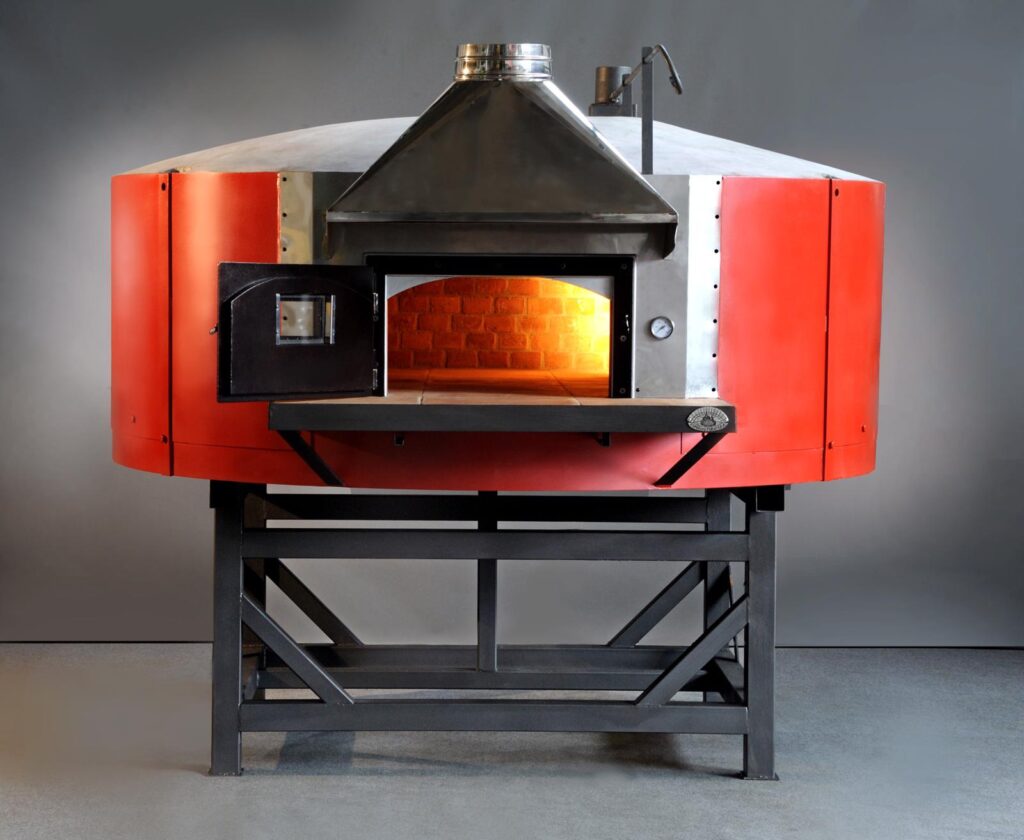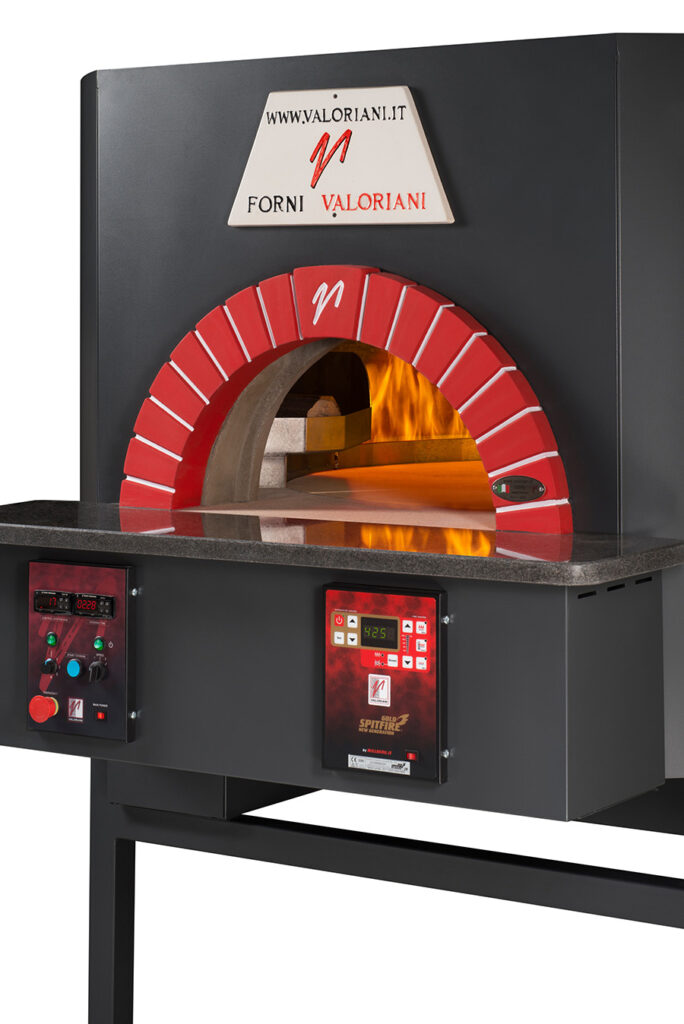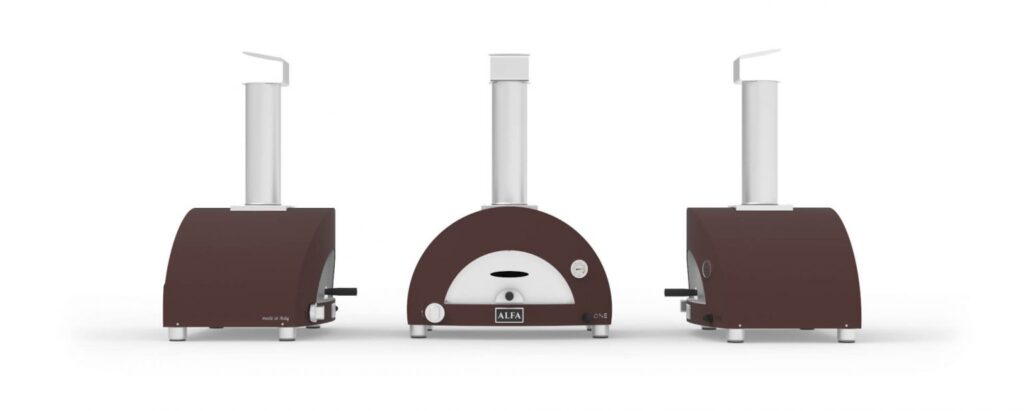Gas Fired Pizza Ovens In 2021
Gas-fired pizza ovens are simply versatile and offer a much cleaner way to cook pizza, roast fish, and bake pastries or cookies. Despite a whole world of options to pick from, as pizza ovens also run on charcoal, wood, or wood pellets, gas fired pizza ovens are the most convenient and easy to handle just because of the way they offer to cook pizza.
Gas fired ovens reduce pizza cooking time because the bricks and the inner surfaces of the oven get quickly heated up. The bricks and the inner walls disburse the heat so fast (to a temperature of approximately 370 degrees Celsius) to evolve that well-cooked tempting pizza within two to five minutes. Once you are done with cooking your pizza, you need not clean out and discard the residue or log leftovers, unlike wood-fired ovens.
For a better understanding of gas outdoor pizza ovens, let us dig deeper to find out more about these incredible pizza ovens and their significance.

Materials Used To Make An Outdoor Pizza Oven
Materials that have the affinity to absorb a huge amount of heat are primarily used to construct pizza ovens. Bricks are apt to absorb and retain heat for a longer duration of time, which is why they find the first place when it comes to constructing an outdoor pizza oven, may it be the dome or the tiled floor of the oven. Gas fired brick pizza ovens offer a rich experience of cooking pizza differently because the gas heats the oven fast to reach a very high temperature when compared to most conventional pizza ovens.
The heat generated by the wood fire or the gas is held by these bricks placed in the dome and on the floor of the oven. The layers made on the bricks help to retain the warmth, and in turn, the bricks disburse the heat inside the oven, helping to cook your pizza properly and evenly.
Apart from the layers on pizza oven bricks, you have perlite that can survive up to a temperature of 2,000°F (about 1,090°C). Fibre insulation is used to avert heat loss through conduction; however, it is also useful in preventing heat transfer to surrounding areas.
The asbestos-free calcium silicate board is a thermal insulation material used in pizza ovens that has the strength to resist temperatures up to 2,012°F (about 1,100°C). To hold the temperature for a longer time and to cook your food evenly, it is vital to ensure the beneath of the floor of your gas fired pizza oven is insulated properly using a calcium silicate board.
Gas Fuelled Vs Wood-fired Pizza Ovens
It is certainly not very easy to draw a line between the two, as both gas-powered and wood-fired ovens have their own uses and come with different benefits. However, gas-powered pizza ovens are significantly loved when it comes to convenience and maintenance. Both ovens have their strong points, and it is up to the individual and circumstance.
While the process of making up the wood fired pizza oven, lighting, and working with wood or charcoal may sound good for a few, for most pizza enthusiasts, the job could be boring and annoying. On the other hand, gas-fuelled pizza ovens are convenient, reliable, and simple when compared to wood fired pizza.
A wood-fired pizza oven interferes with the natural flavour of the ingredients of your pizza. The flavour of the wood used to heat up the oven adds up its smoky flavour to your pizza, whereas the gas fuelled pizza ovens cook that incredible pizza to evolve a splendid taste without intervening in the natural flavours of the ingredients.
The wood fired ovens invite your attention to look after them regularly and generally add up more work for you, so cooking and keeping your wood fired oven maintained will not be an easy task to do every time you make your favourite dishes. On the contrary, gas fired ovens are reliable, easy to handle, and, on the other hand, also pocket-friendly.
The most significant benefit of the gas fired oven is its unparalleled process of faster heating up. Gas ovens generally take 30 minutes to heat up to a considerably high temperature, as opposed to the 1-2 hours of heating time of wood-fired pizza ovens.
Different Types Of Gas Fired Ovens
It is beyond doubt that pizza is one of the most popular and extensively accessible dishes across the globe. To cook a pizza, you can have an ample choice of versatile pizza ovens that are both for your home day-to-day use as well as for a commercial purpose. While exploring to whip up a delightful pizza, you can have your pick among the following commercial pizza ovens that can run on gas:
Brick Pizza Ovens
Brick pizza ovens can be gas-fired or wood-fired. Brick pizza ovens absorb and retain the heat over an extended duration and eventually release and distribute the heat uniformly to ensure your pizza or any other dishes are well-cooked. The brick pizza oven is a term that is used for both modular/assembled ovens made of refractory material and traditional masonry single-chambered ovens.
Brick pizza ovens can not only be used to cook pizza but can be employed to make different kinds of baking and cooking other dishes of your taste as well. In addition to a pizza, you can explore cooking dishes like meats and vegetables, lasagne, bread, and baking cookies in the same compartment; however, commercial brick ovens have multiple decks/compartments. The brick pizza ovens can even cook your dishes and pizzas by heating up the oven using a gas burner.
The heat builds up inside the oven cavity as the construction of the brick pizza oven is made so that the oven not only holds the warmth but also reflects it consistently over the cooking area.
This, in turn, results in a fine browning and crunching crust to your pizza. Fixed brick pizza ovens offer a rustic and authentic Italian look and can be either dome-shaped or straight.
When compared to conventional ovens, the size and high heat-retaining potential of brick pizza ovens evolve high productivity almost within no time. You can cook a Neapolitan pizza within 60 to 90 seconds at 700–800°F (375–425°C), a classic pizza within two to three minutes at 600–700°F (325–375°C), and a Romana pizza within five minutes at a temperature between 525–600°F (275–325°C).
Fired with gas or wood, brick pizza ovens work best at a temperature ranging between 315 and 540 degrees Celsius. The brick pizza oven is an awesome investment to run for a lifetime, as these ovens are adaptable and can be employed for fine-dining restaurants, traditional pizzerias, rustic establishments, as well as outdoor dining.

Conveyor Pizza Ovens
Conveyor pizza ovens are mostly large in size and are fitted with a gas or electric burner to heat up the oven to a specific temperature required to cook a particular pizza or bake any of your other favourite meals.
The cooking process of pizzas in a conveyor oven revolves around a conveyor belt. The freshly prepared pizzas are placed continually at one end of the belt, and the conveyor belt slowly moves them through the oven.
While being moved from one end to the other over the conveyor belt, the pizzas get cooked with the high heat inside the oven. Once the pizza cooking process is through, the cooked pizzas are passed slowly onto the other side of the conveyor belt, where they are pushed out. A conveyor gas powered pizza oven makes it possible to cook many pizzas simultaneously without losing time and heat that would otherwise not be possible in conventional pizza ovens.
The quick-cooking technique of conveyor ovens can be significantly beneficial where there is a need to cook literally hundreds of pizzas a day. Conveyor pizza ovens are convenient too and have the potential to cook smoothly and evenly.
Fired with gas or electricity, conveyor pizza ovens can run through a temperature ranging between 400 and 600 degrees Fahrenheit (205 and 315 °C). Conveyor pizza ovens are best suited for cafeterias, bars, quick-service restaurants, casual-dining restaurants, chain restaurants, etc.
Convection Pizza Ovens
The process of cooking a pizza in a convection oven is almost the same as that of a standard convection unit. Convection ovens work by circulating the hot air using fans, around the interior of the oven that helps cook the entire pizza as the hot air helps keep an even temperature throughout.
Preheating in a convection pizza oven, using a gas or electric burner, usually takes about 15 minutes and consumes much less power to reach and retain the temperature. This way the cost of a cooked pizza and other meals is comparatively lesser. Convection pizza ovens are a great way to quickly cook (within 5-7 minutes) frozen, fresh as well as premade pizzas. (in a commercial set-up).
Convection pizza ovens can run through a temperature ranging between 425-500 degrees Fahrenheit, (About 220–260°C).
Deck Pizza Ovens
When space is an issue, deck pizza ovens are the answer to creating a pizza with an authentic taste. Deck pizza ovens also use a form of conduction heat similar to a traditional brick oven.
The flat decks or shelves of this pizza oven are carved out of stone or stainless steel and heated by an electric or gas powered burner to achieve the desired temperature. The peculiar character of the stone used here to absorb the humidity plays a vital role in creating a crispy crust by heating the pizza evenly across.
A pizza deck oven can reach temperatures between 400 and 600 °F, making it superior to some oven types but not quite in the same league as a wood-fired pizza oven.
Deck pizza ovens can work in temperatures ranging between 400 and 700 degrees Fahrenheit (about 205 and around 375°C), and the standard cooking time is between 5 and 10 minutes.
These ovens are best at cooking thin crust and deep-dish pizzas and fresh or frozen flatbread and are used in fine-dining restaurants, traditional pizzerias, and casual-dining restaurants.
Impinger Pizza Ovens
Impinger pizza oven is a conveyor oven that uses specialised radiant cooking. In these types of ovens, the heat enters into the pizza both from the top and the bottom directly to evolve a crispy, well-cooked pizza.
Since there is a direct distribution of heat over the pizza, this technique allows for improving the baking excellence and pizza cooking quality. Impinger ovens can be gas-fired or can work using an electric burner and have the potential to best perform between 300 and 575 degrees Fahrenheit.
Reasons To Buy A Gas Fired Pizza Oven
There could be multiple reasons to choose a gas fired oven but the significant ones among the list are:
- Easy to operate when compared to a wood-fired oven as it offers many conveniences; turning the pizza oven on and off is simple and free of hazards.
- Offers a hygienic and cleaner way of cooking a pizza, unlike a wood fired oven that you need to regularly clean and maintain properly.
- Free from the hazards of continuous ordering or buying and chopping timber and logs for your oven.
- You have plenty of convenience in getting and using LPG gas bottles that can be refilled locally.
- Gas fired pizza ovens increase significant efficiency as these ovens can also simultaneously burn wood, which allows them to heat faster and allow for more control over temperatures while cooking.
- Compared to coal or wood fired ovens the learning curve on a gas fired oven is naturally easier, which makes it a convenient and easier process to operate for everyone, including children and the elderly.
Quality Assurance Factors To Look For In A Gas Fired Oven
Getting up to the desired temperature and holding it well inside the oven is typically what you need to cook a perfect pizza. To achieve this, here are a few things to look for:
- Dual-layered insulation of the hearth and the dome of the pizza oven. This will ensure the temperature is retained inside the oven and the outer dome does not get very high. This helps in minimising burn risks on the outer surface.
- Refractory bricks with a professional grade that can create a convective heat transfer system.
- High-grade stainless steel that can survive the extreme temperature generated and retained inside the oven.
- A flue that can be placed in front of a door in a traditional wood-fired oven to minimize heat loss
The Final Word
If you are a pizza enthusiast, you must be aware of the efficiency and the process of cooking pizza with different pizza ovens. While wood/charcoal-fired and conventional ovens are fantastic to create delicious pizzas, gas-fired pizza ovens are most versatile and undeniably awesome to make that browned and crispy crust pizza at extremely high temperatures.

